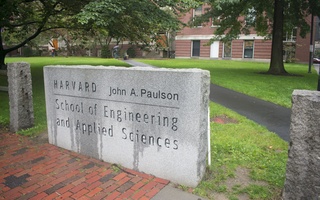In 2016, University President Drew G. Faust convened the Presidential Task Force on Inclusion and Belonging with representative professors, staff, alumni, and undergraduates to evaluate and give recommendations on inclusivity concerns on campus. After almost a year of studying diversity issues across the University, the task force has issued a draft of its executive summary. It recommends a number of funding initiatives and assessment methods as well as the creation of a central administrator, who would oversee the offices and initiatives concerning diversity and inclusion across Harvard’s campus.
We applaud the University for producing this report and looking at issues of inclusion and belonging on this campus. We believe, however, that some of these suggestions could fall short of their objectives, especially in regards to the creation of a central diversity administrator. The appointment of a single administrator to look at these issues across the University would be myopic without involving greater student input. For example, the administration could create a body of student representatives from across all the schools to aid in the search for an administrator.
Student input is crucial to ensure that the University truly understands student needs and adopts the right solutions. The central administrator should have the responsibility of meeting regularly with student groups, especially those representing individuals who have traditionally been marginalized, whether that be racially, socio-economically, or ideologically.
In addition, we urge the University to assemble a coalition of student representatives from across all the schools to work on these issues in close partnership with the central administrator. Adding more student voices ensures a well-represented sample of the varied experiences of our diverse student body. These students will give greater clarity for issues such as creating additional multicultural centers and an Ethnic Studies department. However, this group should work to create tangible action rather than just exist as a committee in name. A partnership with the central administrator will help ensure that the conclusions of the group are turned into action.
Finally, we hope Harvard will look more closely at the University’s overall culture of exclusivity instead of taking a vertical approach to the complex problems that lie in the way of inclusivity on campus. A single initiative or program will not effectively address issues of inclusion and diversity if it is not accompanied by complementary initiatives. This task force and the report that will come from it are a crucial step to making Harvard inclusive. The recommendations must be made into realities, however, with continued input from students. The alternative risks losing the report to history, remembered nowhere but the University Archives.This staff editorial solely represents the majority view of The Crimson Editorial Board. It is the product of discussions at regular Editorial Board meetings. In order to ensure the impartiality of our journalism, Crimson editors who choose to opine and vote at these meetings are not involved in the reporting of articles on similar topics.
Read more in Opinion
Understanding “T”Recommended Articles
-
 Student Life Office Names Two Administrators
Student Life Office Names Two Administrators -
Out of Many, One HarvardThese structural ideas should serve as a basis for the College to address more deeply embedded issues surrounding identity and ensure the continued fulfillment of its promises of inclusion.
-
 Khurana Fields Criticisms on College Diversity
Khurana Fields Criticisms on College Diversity -
 Smith Details FAS Diversity Initiatives Following Report
Smith Details FAS Diversity Initiatives Following Report -
 In Wake of Climate Survey, SEAS Administrators and Students Reflect on Diversity Initiatives
In Wake of Climate Survey, SEAS Administrators and Students Reflect on Diversity Initiatives













